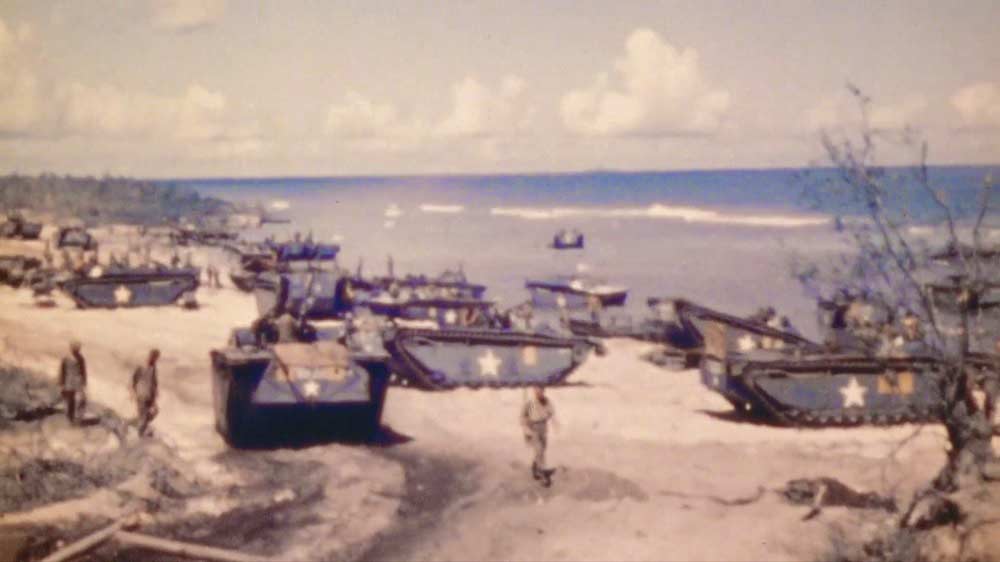The Pacific War in Color episode 5: By the summer of 1944, America increasingly controlled the seas and skies of the Pacific, but the fighting on land remained bloody and brutal.
As U.S. forces battled for two islands at once, Japan used ingenious dug-in bunkers and caves to make them pay for every inch of ground. Discover America’s strategic and personal motivations behind their simultaneous invasions of Tinian and Guam and witness their far less successful plan to strike Japan from India and China with the new, troubled aircraft, the B-29.
The Pacific War in Color episode 5 – Striking Distance
The Second Battle of Guam (21 July – 10 August 1944) was the American recapture of the Japanese-held island of Guam, a U.S. territory in the Mariana Islands captured by the Japanese from the U.S. in the 1941 First Battle of Guam during the Pacific campaign of World War II.
Guam, at 212 square miles, is the largest island of the Marianas, with a length of 32 miles and a width ranging from 12 miles to four miles at different points of the island. It had been a United States possession since its capture from Spain in 1898 until it was captured by the Japanese on 10 December 1941, following the attack on Pearl Harbor. During the Japanese occupation of Guam, it was not as heavily fortified as the other Mariana Islands such as Saipan that had been Japanese possessions since the end of World War I. But by 1944, Guam had a large Japanese garrison.
The Allied plan for the invasion of the Marianas, Operation Forager, called for heavy preliminary bombardment, first by carrier aircraft and USAAF bombers based in the Marshall Islands to the east, then once air superiority was gained, close bombardment by battleships, cruisers, and destroyers. 22 Saipan, Tinian, and Guam were chosen as the targets due to their size, their suitability as a base for supporting the next stage of operations toward the Philippines, Taiwan, and the Ryukyu Islands. The seaport at Apra Harbor was suitable for the largest ships; and air bases for Boeing B-29 Superfortresses could be built from which to bomb Japan. B-24 Liberators from the Marianas could also bomb Iwo Jima and the Bonin Islands, such as Chichi Jima.
